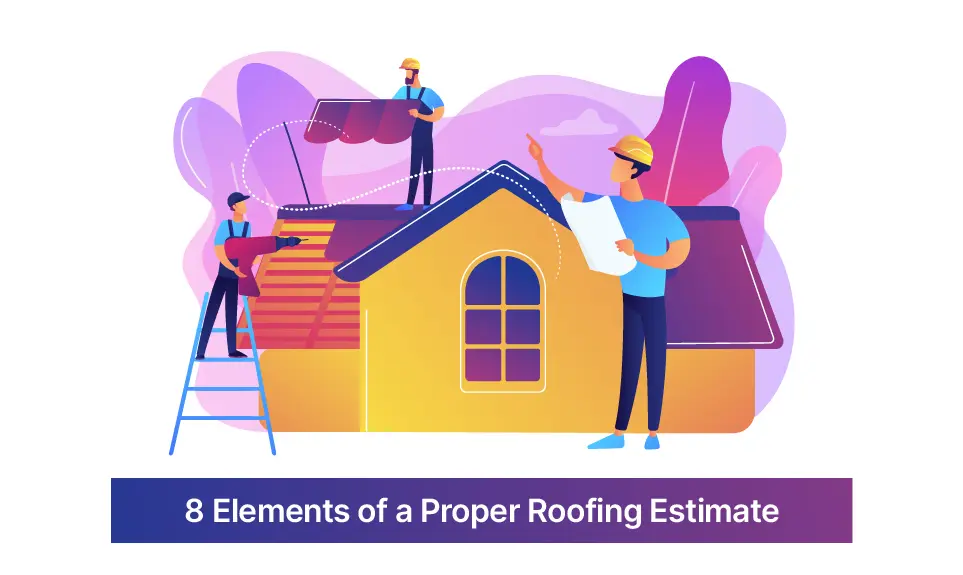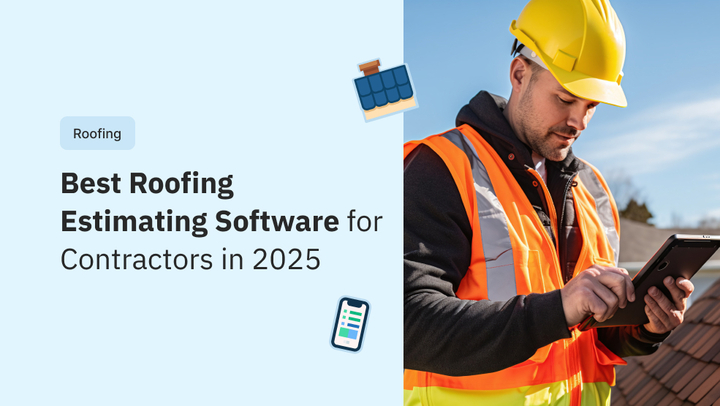Here is a universal truth – The most important part of a house is the roof. Without a roof, it’s just four walls. Such an essential component of a house requires regular maintenance and total replacement once in a while. As we speak, thousands of homeowners are replacing their roofs that have got worn and torn over the years.Now, if you’re a contractor who does roofing, then you know that the estimate is the most vital factor that determines whether a house owner picks you as their roofing contractor or not. Unfortunately, the estimate is also the most challenging document to come up with.If you are a newbie in the industry, you are highly likely not to know what to include and what to exclude in a typical roofing estimate. And that’s where this post can help.We have come up with eight essential elements that should be a part of any roofing estimate. But before we dive into that, remember the golden rule of roofing estimate –
“ The estimate should highlight your integrity, quality, and experience. It should cover everything that’s going to be done during roof replacement.”
Elements of right roofing estimate
We believe that any roofing estimate worth its salt must include the eight elements listed below in this section. The eight important elements of a proper roofing estimate are:
1. Your contact information
The first thing that you should add to the estimate is your contact info. It should have your company name, address, phone number, website, and email address. This basic info will help the customers know more about the company and reach out to you for any questions. You can showcase your business’s legitimacy by including registration numbers or license details.
2. Detailed work description
Your roofing estimate should have detailed information about every step of work that you are going to perform. Here are some very basic information that you can include:
- Details about the layers, including their thickness
- Locations of the flashes
- Type of roof that will be installed
- Sizes of bolts and fasteners
- Machines that will be used for the operation
If it is a replacement job, then the processes associated with the ripping of the old roof and the number of layers that are to be ripped should also be included.
3. Costs
A good roofing estimate will contain all the costs associated with the job. This will ideally help the customers compare the bids. Include the following components without fail in your roofing estimate:
- Labor costs
- Material costs
- Cost to tear off the old roof (if applicable)
- Roof installation or roof repair costs
- Permits
- Cleanup and disposal fees
Some of these costs like roof installation costs are usually calculated per square foot. The total roofing cost will depend entirely on the components mentioned above and any taxes roofing companies decide to levy on their customers. Be as transparent as possible and ensure that your customers are not surprised by any hidden fees later on.
4. Protection of property
Whenever there is repairing or construction work (like roofing), every contractor takes adequate precautionary measures to protect the property from any damage. It could be as simple as covering the attic or safely securing the appliances from any falling debris. It could also be covering the swimming pool with a fresh tarp.Now, as a contractor, you need to highlight this to the customer in the estimate and talk about how much it will cost to do the same. Never assume that your customers know about this. You do not want any sour experiences later when a customer sees the final invoice.
5. Start and completion date
This is a given. The estimate *must* include the date at which you can begin the job and when you intend on completing it. When coming up with dates, always consider any unforeseen circumstances that you might face. Keep some buffer days. If nothing happens, well and good, you can complete the work much before the promised date making the customer happy. A classic case of under-promising and over-delivering.The presence of the start date and end date will also help the customers plan any alternate arrangements for their stay till the job is complete.Also, don’t forget to mention the date of sending the estimate. This date might seem unnecessary, but this will tell you how old the estimate is. It will also help your customers compare costs in the future.
6. Materials used
A wide range of materials is required to complete the roofing process. Without a doubt, all of them need to be listed in the estimate. As the final cost of the roof is majorly dependent on the materials used, it is only appropriate to mention the details like material costs.The customers should know what they are spending their money on. Also, if you are using high-quality roof materials in your process, highlighting them in the estimate will let the customers know that their roof is in the right hands.This list must have all the essential elements like flashing, shingles, gutter pieces, soffit components, bolts, fasteners, in short, every material that the roof will need. You should also include the details of the name and types of sealants used to close the areas that require waterproofing.
7. Warranties
Every customer has one question in mind – what is the warranty that you provide for the roof. In other words, how long can they live peacefully knowing that if something goes wrong, you’re there to take care of it without taking a penny? Such important information cannot be ignored in your estimate.In fact, it is ideal if you could specify the warranty type and the warranty duration for each roofing component that you have installed and also for the entire roof in general. Such details will also show the durability of the material you’ve used and the trust that you have in your workmanship.
8. Payment methods supported
The last and important aspect to mention in the roofing estimate is the various types of payment modes you accept. It should also include the details of how you collect the payments – is it a one-time upfront fee, or do you take payment in regular intervals as the work progresses, or is it a normal two-time payment mode starting with an advance before the work and the rest after the completion of work?
Conclusion
Coming up with a detailed estimate can always be overwhelming. But if you understand well what your customers are actually looking for in an estimate, you can easily come up with a thorough and transparent estimate. The components highlighted in this post are a good place to start. You can add and modify details and components as per your business requirement.Using a roofing estimate template will help you streamline and speed up your estimating process. If you are on the search for a roofing estimate template, check out our estimates page. You can download a free estimate template and customize it to fit your needs.






